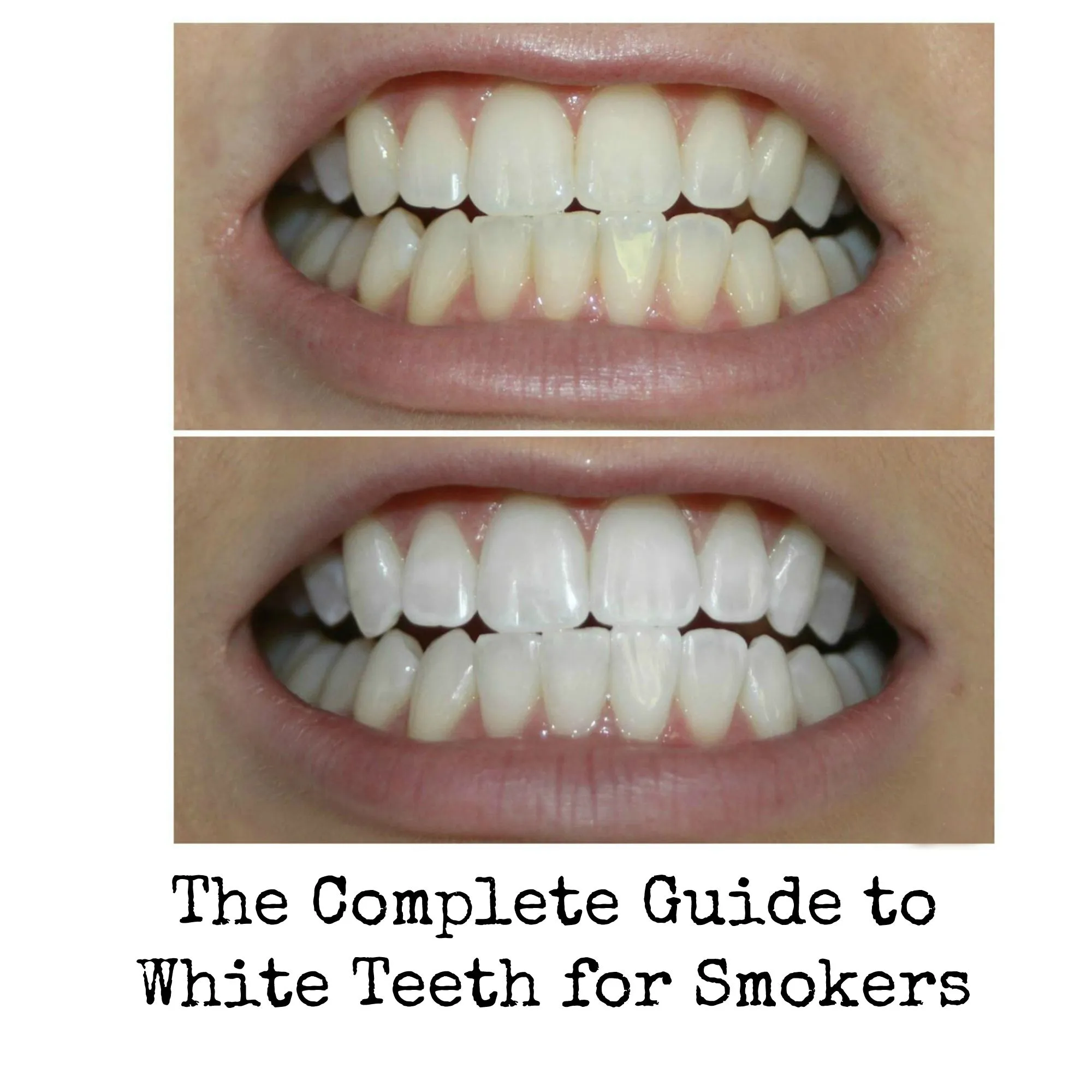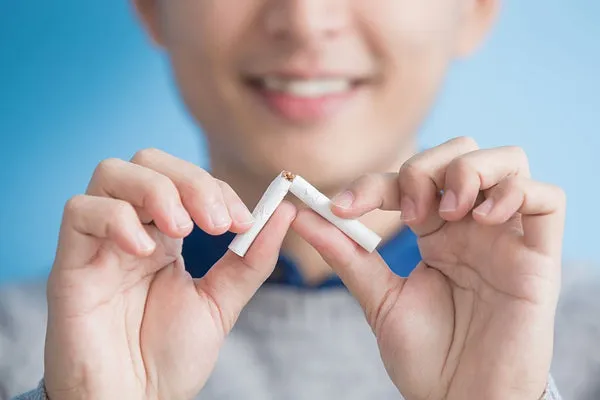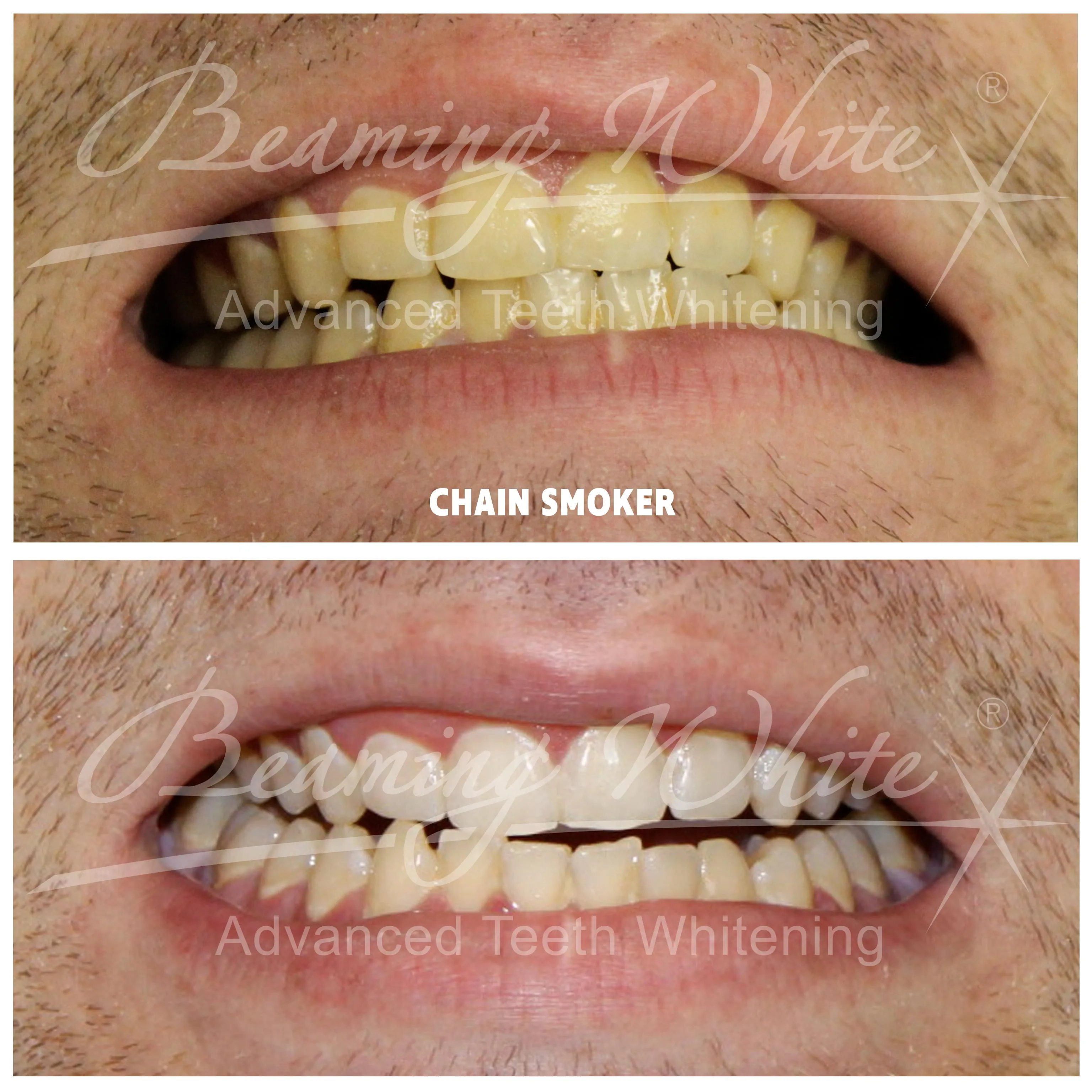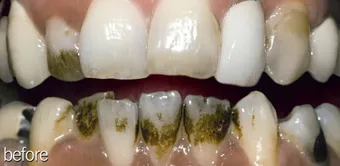Understanding Teeth Whitening
Teeth whitening is a cosmetic dental procedure designed to lighten the color of your teeth and remove stains. It’s one of the most popular cosmetic treatments, sought after by individuals looking to enhance their smile and boost their self-esteem. The process involves using bleaching agents, typically containing hydrogen peroxide or carbamide peroxide, to break down the stains and discoloration that have accumulated on the enamel of your teeth. These stains can result from various factors, including the consumption of certain foods and beverages, aging, and, of course, smoking. The effectiveness of teeth whitening can vary depending on the type of stain, the chosen whitening method, and the individual’s oral health. The goal is to achieve a brighter, more aesthetically pleasing smile, and it’s essential to understand the process and potential lifestyle impacts to make the most of the treatment.
How Teeth Whitening Works
Teeth whitening works through a chemical process that lightens the discoloration within the tooth enamel. The active ingredients in whitening products, such as hydrogen peroxide or carbamide peroxide, penetrate the enamel and break down the stain molecules. The peroxide molecules react with the stain compounds, causing them to become less concentrated and resulting in a lighter appearance. The process effectively removes both extrinsic stains (those on the surface) and intrinsic stains (those within the tooth). The concentration of the bleaching agent, the duration of the treatment, and the method used (e.g., in-office vs. at-home) all influence the whitening results. Proper application and adherence to the instructions provided by your dentist are crucial to ensure the safety and effectiveness of the treatment. It’s worth noting that teeth whitening does not work on all types of stains or on dental work such as fillings, crowns, or veneers.
Types of Teeth Whitening Procedures

There are several types of teeth whitening procedures available, each with its own advantages and considerations. The most common types include in-office whitening, at-home whitening kits, and over-the-counter whitening products. In-office whitening, performed by a dentist, typically involves a higher concentration of bleaching agents and can yield dramatic results in a single appointment. The dentist protects the gums and soft tissues while applying the whitening solution. At-home whitening kits, prescribed by a dentist, usually involve custom-fitted trays and a lower concentration of bleaching agent, requiring several days or weeks of consistent use. Over-the-counter products, such as whitening strips and toothpastes, are readily available and offer a more gradual whitening effect. The best choice depends on individual needs, the severity of the stains, and budget considerations. Consulting with a dentist is important to determine the most appropriate and safe whitening option for your situation.
The Impact of Smoking on Teeth Whitening
Smoking significantly impacts the effectiveness and longevity of teeth whitening treatments. The chemicals in tobacco, including nicotine and tar, are notorious for staining teeth and quickly reversing the results of whitening procedures. Smoking not only causes new stains to form but also accelerates the discoloration process, leading to a less vibrant and less satisfying smile. Additionally, smoking can negatively affect overall oral health, increasing the risk of gum disease, tooth decay, and other dental problems. The combination of these factors makes smoking a major deterrent for those considering teeth whitening. To maximize the benefits of teeth whitening and maintain a bright smile, it is highly recommended to avoid smoking or quit altogether. This will not only improve the aesthetics of your teeth but also contribute to your overall health and well-being.
Why Smoking Stains Teeth
Smoking stains teeth due to the presence of tar and nicotine in tobacco products. Tar is a dark, sticky residue that adheres to the tooth enamel, causing yellowing and brown discoloration. Nicotine, while colorless itself, reacts with oxygen and other compounds to create yellow stains. These substances penetrate the porous surface of the enamel, making it difficult to remove the stains through brushing alone. Over time, the continuous exposure to smoke intensifies the staining, leading to a significant change in the appearance of the teeth. The more frequently and heavily an individual smokes, the more pronounced the staining will be. Smoking can also lead to the formation of plaque and tartar, which further contribute to the discoloration and affect the overall health of the teeth and gums. Addressing these issues requires professional cleaning and often, repeated whitening treatments.
How Smoking Affects Whitening Results

Smoking severely compromises the results of teeth whitening. Even if you achieve a brighter smile through professional or at-home whitening, smoking can quickly undo the effects. The staining compounds in tobacco rapidly re-stain the teeth, negating the investment and effort of the whitening treatment. Smokers often find that their teeth return to their pre-whitening color, or even darker, within a short period. This is because the nicotine and tar molecules readily bind to the enamel, replacing the lighter shade achieved through whitening. Moreover, smoking can impede the whitening process itself, making it more difficult for the bleaching agents to penetrate the enamel effectively. Consequently, smokers may require multiple whitening sessions to achieve the desired results, only to see them fade quickly. For those who smoke, the longevity of teeth whitening is significantly reduced, and the costs associated with maintaining a white smile increase dramatically.
Potential Complications of Smoking After Whitening
Smoking after teeth whitening can lead to several potential complications, negatively impacting both your oral health and the outcome of the treatment. These complications extend beyond mere staining and can involve increased sensitivity, a higher risk of re-staining, and compromised oral health overall. It’s important to be aware of these risks to make informed decisions about your dental care and lifestyle choices. Quitting smoking or avoiding it after a whitening procedure is crucial to mitigating these risks and preserving your investment in a brighter smile.
Increased Sensitivity
Teeth whitening can sometimes cause temporary tooth sensitivity, and smoking may exacerbate this effect. The bleaching agents used in whitening treatments can make the enamel more porous, increasing the sensitivity of the teeth to hot and cold temperatures. Smoking further irritates the teeth and gums, potentially leading to heightened sensitivity and discomfort. The chemicals in tobacco can inflame the gums, causing them to recede, which exposes more of the sensitive root surfaces of the teeth. For individuals who already experience sensitivity after whitening, smoking can make the problem worse, making it difficult to enjoy certain foods and drinks. This increased sensitivity can be a significant deterrent to maintaining a bright, healthy smile.
Risk of Re-Staining

One of the most significant risks of smoking after teeth whitening is the high likelihood of re-staining. The chemicals in tobacco, especially tar and nicotine, are notorious for causing teeth discoloration. After a whitening treatment, the enamel is more susceptible to staining as it is temporarily more porous. Smoking introduces these staining agents directly onto the teeth, rapidly reversing the whitening results. Even a single cigarette can contribute to discoloration, and the cumulative effect of smoking quickly diminishes the brightened appearance. The risk of re-staining is a major reason why dentists strongly advise against smoking after teeth whitening. This can be a significant disappointment for those who have invested time and money in achieving a whiter smile.
Compromised Oral Health
Smoking is detrimental to overall oral health, and the effects are amplified after teeth whitening. Smoking increases the risk of gum disease, tooth decay, and oral cancer. The chemicals in tobacco impair the immune system, making it harder for the body to fight off infections in the mouth. Smoking can also reduce saliva production, leading to a dry mouth, which further increases the risk of cavities and other dental problems. After teeth whitening, the focus is on maintaining a healthy and attractive smile. Smoking undermines these goals by damaging the teeth and gums and making it more difficult to maintain optimal oral health. Combining whitening with smoking is counterproductive, as the benefits of whitening are quickly overshadowed by the negative effects of tobacco use.
Best Practices After Teeth Whitening
To maintain the results of teeth whitening and protect your oral health, it’s essential to follow specific best practices after the procedure. This includes avoiding smoking completely, adhering to dietary restrictions, and establishing a diligent oral hygiene routine. These measures help to prevent re-staining, prolong the whitening effect, and support overall dental well-being. By adopting these habits, you can maximize the benefits of teeth whitening and enjoy a lasting, healthy smile. Your dentist will provide personalized recommendations based on your specific needs and the type of whitening treatment you received.
Avoid Smoking Completely

The most important advice after teeth whitening is to avoid smoking entirely. Smoking is the primary culprit in teeth staining, and it will quickly reverse the effects of the whitening treatment. Ideally, you should quit smoking before undergoing teeth whitening to maximize the procedure’s success. If you can’t quit, refrain from smoking for as long as possible after the whitening treatment, preferably for at least a few weeks. This will give your teeth time to stabilize and reduce the risk of immediate staining. The longer you avoid smoking, the longer your teeth will remain white and the better your oral health will be. Consider seeking professional help or using nicotine replacement therapy to assist you in quitting.
Dietary Restrictions
Following dietary restrictions after teeth whitening can help preserve the results. Certain foods and beverages can stain teeth, and their consumption should be limited or avoided. These include coffee, tea, red wine, dark-colored sodas, and highly pigmented foods such as berries, soy sauce, and curries. For the first few days after whitening, it’s best to stick to a “white diet” – foods that are light in color, such as chicken, white rice, pasta, and dairy products. This will minimize the risk of staining and allow your teeth to stabilize. After this initial period, you can gradually reintroduce other foods and drinks, but be mindful of their staining potential. Rinsing your mouth with water after consuming potentially staining foods can also help to minimize their impact.
Oral Hygiene Routine
Maintaining a diligent oral hygiene routine is crucial for preserving the results of teeth whitening and protecting your overall oral health. This includes brushing your teeth at least twice a day with a whitening toothpaste, flossing daily to remove plaque and food particles from between your teeth, and using an antibacterial mouthwash to control bacteria and reduce the risk of staining. Be sure to use a soft-bristled toothbrush to avoid irritating the gums. Regular dental check-ups and professional cleanings are also essential for removing surface stains and maintaining a healthy smile. Your dentist can provide personalized recommendations for oral hygiene products and techniques to optimize your results and maintain a bright, healthy smile long after the whitening treatment.
Alternative Ways to Manage Smoking Cravings

If you are a smoker who has undergone teeth whitening, managing cravings is crucial to maintaining your results. Several strategies can help you cope with the urge to smoke. Engaging in activities that distract you, such as exercise, hobbies, or spending time with friends, can help take your mind off smoking. Identifying your triggers (e.g., stress, social situations, certain times of day) and planning how to cope with them is also essential. When you feel a craving, try drinking water, chewing sugar-free gum, or deep breathing exercises. Consider using nicotine replacement therapy or seeking support from a healthcare professional. Building a support system of friends, family, or a support group can provide encouragement and accountability. By combining these strategies, you can successfully manage cravings and avoid smoking after teeth whitening.
Nicotine Replacement Therapy
Nicotine replacement therapy (NRT) is a valuable tool for managing smoking cravings and supporting your effort to quit. NRT products provide a controlled dose of nicotine without the harmful chemicals found in tobacco. This helps to reduce withdrawal symptoms, such as cravings, irritability, and difficulty concentrating. NRT is available in various forms, including patches, gum, lozenges, inhalers, and nasal sprays. These products deliver nicotine through different methods, allowing you to choose the most suitable option for your needs. Using NRT, combined with other strategies such as behavioral therapy, significantly increases your chances of quitting smoking. Consulting with a healthcare provider or pharmacist is recommended to determine the appropriate NRT product and dosage, as well as to discuss potential side effects. Remember that NRT is most effective when used as part of a comprehensive smoking cessation plan.
Professional Advice
Seeking professional advice from your dentist or a healthcare provider is essential when considering teeth whitening, especially if you are a smoker. Your dentist can assess your oral health, determine if you are a good candidate for whitening, and recommend the most appropriate treatment. They can also provide guidance on how to maintain the results and address any potential complications, such as increased sensitivity. Consulting with your doctor or a smoking cessation specialist can offer valuable support and resources if you are trying to quit smoking. These professionals can provide evidence-based strategies, prescribe medications (such as NRT or prescription drugs), and offer counseling to help you overcome nicotine addiction. They can also monitor your progress and adjust your treatment plan as needed. Taking a holistic approach, which combines dental care with medical advice, increases your chances of achieving a brighter smile and improving your overall health.
Long-Term Benefits of Quitting Smoking

Quitting smoking provides numerous long-term benefits that extend far beyond maintaining the results of teeth whitening. It significantly improves overall health and well-being, reducing the risk of various diseases and increasing life expectancy. Quitting smoking lowers the risk of developing lung cancer, heart disease, stroke, and respiratory illnesses. It enhances cardiovascular health, improves circulation, and increases energy levels. Quitting also improves the sense of taste and smell, making food more enjoyable. It boosts the immune system, making you less susceptible to infections. Moreover, quitting smoking has a positive impact on your appearance. It can improve your skin complexion, reduce wrinkles, and eliminate bad breath. Ultimately, quitting smoking is one of the most significant steps you can take to improve your health and quality of life.
Improved Oral Health
Quitting smoking has a profound positive impact on oral health. It reduces the risk of gum disease, which is a leading cause of tooth loss. Smoking weakens the immune system, making it harder for the body to fight off infections in the mouth. Quitting smoking allows the gums to heal and regenerate, reducing inflammation and bleeding. It also decreases the risk of tooth decay and cavities, as smoking can reduce saliva production, leading to dry mouth. Moreover, quitting reduces the risk of oral cancer, a serious disease often associated with smoking. You’ll notice fresher breath and a healthier mouth overall. By quitting, you improve the appearance of your smile, which will give you added incentive to take care of your teeth. The long-term benefits for your dental health are significant and contribute to a healthier and happier life.
Enhanced Teeth Whitening Results
Quitting smoking dramatically enhances the results of teeth whitening treatments. By eliminating the primary source of staining, you can maintain a brighter, whiter smile for a more extended period. The whitening process is more effective, and the results last much longer without the constant battle against re-staining. Quitting also allows the whitening agents to work more efficiently. The enamel is less likely to be damaged or discolored over time. With a healthy mouth, your teeth are more resilient, and your smile will shine. The investment in teeth whitening will deliver the full intended effect, giving you the confidence of a beautiful and healthy smile. Quitting smoking is one of the best things you can do to complement your teeth whitening efforts and achieve long-lasting results.
